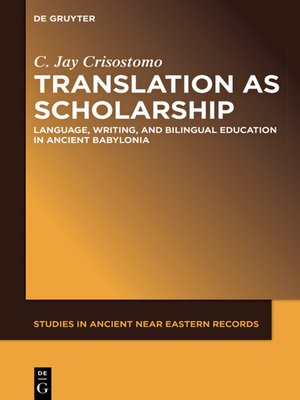Translation as Scholarship
ebook ∣ Language, Writing, and Bilingual Education in Ancient Babylonia · Studies in Ancient Near Eastern Records (SANER)
By Jay Crisostomo

Sign up to save your library
With an OverDrive account, you can save your favorite libraries for at-a-glance information about availability. Find out more about OverDrive accounts.
Find this title in Libby, the library reading app by OverDrive.



Search for a digital library with this title
Title found at these libraries:
| Library Name | Distance |
|---|---|
| Loading... |
In the first half of the 2d millennium BCE, translation occasionally depicted semantically incongruous correspondences. Such cases reflect ancient scribes substantiating their virtuosity with cuneiform writing by capitalizing on phonologic, graphemic, semantic, and other resemblances in the interlingual space. These scholar–scribes employed an essential scribal practice, analogical hermeneutics, an interpretative activity grounded in analogical reasoning and empowered by the potentiality of the cuneiform script. Scribal education systematized such practices, allowing scribes to utilize these habits in copying compositions and creating translations.
In scribal education, analogical hermeneutics is exemplified in the word list "Izi", both in its structure and in its occasional bilingualism. By examining "Izi" as a product of the social field of scribal education, this book argues that scribes used analogical hermeneutics to cultivate their craft and establish themselves as knowledgeable scribes. Within a linguistic epistemology of cuneiform scribal culture, translation is a tool in the hands of a knowledgeable scholar.







